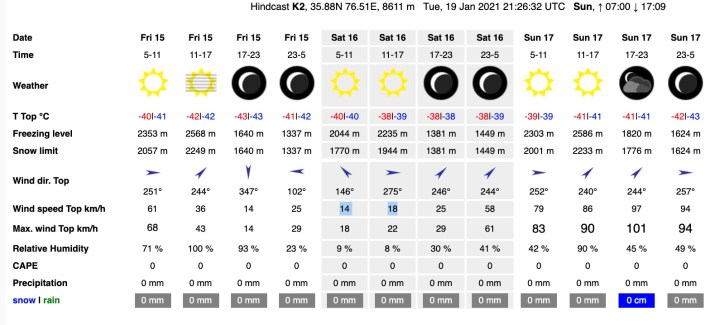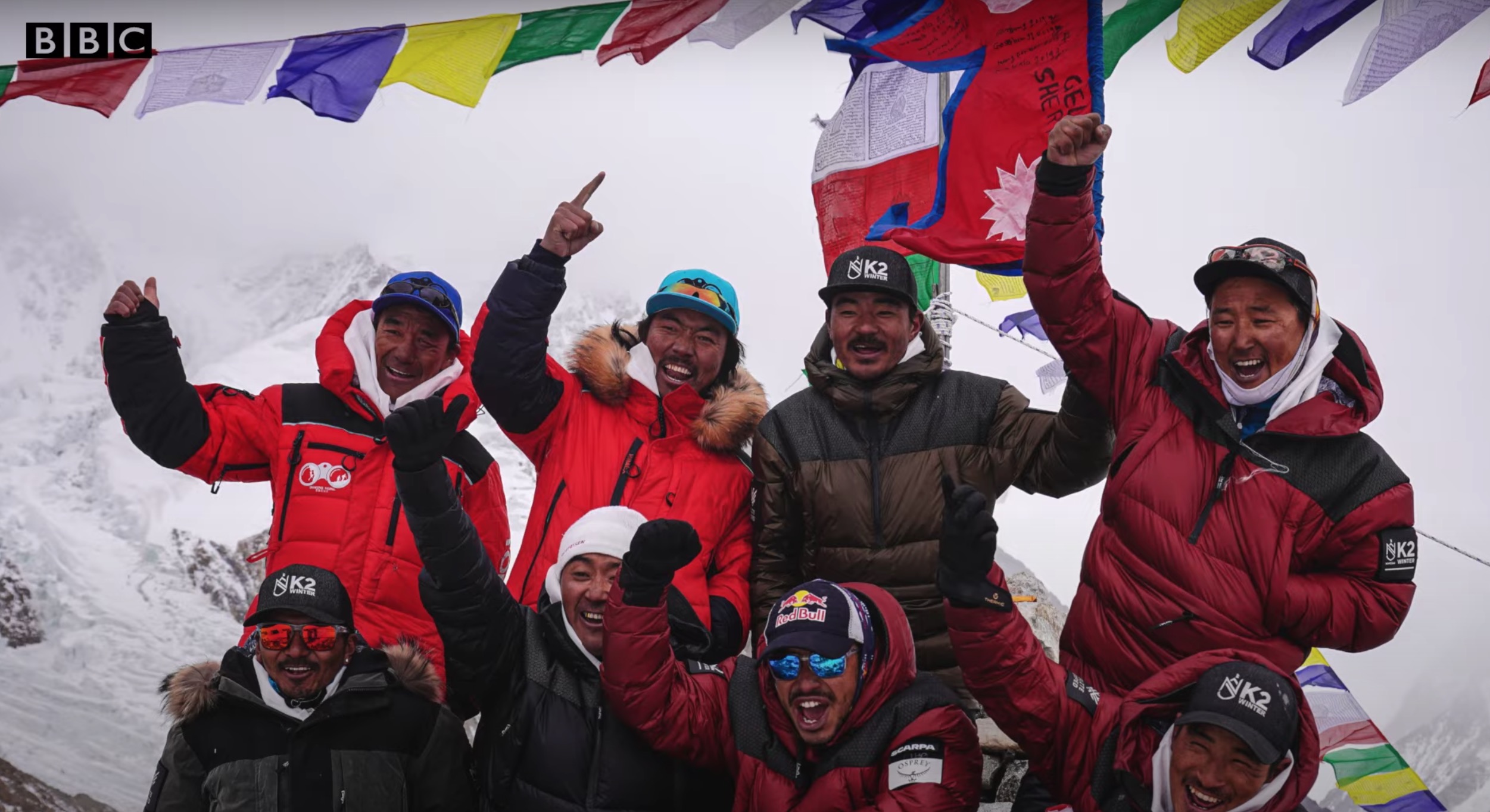If you are concerned that Mt. Everest—one of the tallest mountains in the world—has become a relative Disneyland for hobbyists, would-be mountaineers, and the 45,000 people who visited Base Camp a few years ago and helped drop 12 tons of trash, you do not need to worry about a similar fate befalling the world's second tallest mountain.
K2 is a killer. Fewer than 400 people have summited the peak, and for every four people who reach the summit, one dies trying. The mountain is so foreboding and remote that it doesn't even have an agreed-upon local name. Italian photographer Fosco Maraini remarked on this in his 1952 book, Secret Tibet, writing, "It makes no attempt to sound human. It is atoms and stars. It has the nakedness of the world before the first man – or of the cindered planet after the last." For 34 years, humans have been trying and failing to climb the technically demanding peak in the winter, when weather conditions are significantly more hazardous. Every other 8,000-meter peak had been climbed in winter except K2. A winter ascent was the most prestigious unclaimed mountaineering feat on Earth.
That is, until this past weekend, when a 10-climber Nepalese team broke through and reached the peak. Around 5:00 p.m. local time on Saturday, Nirmal "Nimsdai" Purja, Mingma David Sherpa, Mingma Tenzi Sherpa, Geljen Sherpa, Pem Chiri Sherpa, Dawa Temba Sherpa, Mingma Gyalje Sherpa, Dawa Tenjin Sherpa, Kilu Pemba Sherpa, and Sona Sherpa stepped into history while singing the Nepali national anthem. "We are proud to have been a part of history for humankind," expedition leader Purja wrote, not overselling it one bit.
Because of COVID, there isn't going to be a big spring climbing season in Nepal, which freed up the Sherpa climbers to besiege history ("In 2020, we have earned not even a penny because of Covid-19," Mingma wrote.) The 10-man team is really a fusion of two teams, one led by Purja and one led by Mingma. Purja is a former Nepalese and British special forces soldier, and he broke into the alpinism scene last year when he climbed all 14 of the world's 8,000-meter peaks in a little over six months, shattering the previous record by seven years. Mingma is a veteran guide who has summited Everest five times and notched all 14 of the 8000ers before his 30th birthday. The two expeditions joined forces on New Year's Eve while setting lines above 23,000 feet to K2's Camp III. They may be alone in the history books, but were far from alone on K2. Over 60 people were in the process of attempting the first winter summit this year, including a 49-person team which included 27 Sherpa in support.
The winter conquest of K2 was a stunning achievement, but as is the case with this mountain, even this story doesn't have a happy ending. Only hours after the Nepalese team made history, a Spanish climber named Sergi Mingote fell to his death near Camp I. Mingote was a part of the 49-person expedition, and he'd been on the mountain for around a month before his death. The day after Mingote fell, the body of Russian-American climber and Harvard professor Alex Goldfarb was found on nearby Broad Peak. Goldfarb went missing while attempting to make just the second winter summit of the 8,000-meter mountain only miles from K2.
The process of climbing K2 in winter conditions involves constant shuttling between established camps, ferrying gear up 40-degree glacial slopes, and withstanding 60 MPH winds and -80° F temperatures. At one point a fully stocked camp, replete with climbing equipment, extra cold-weather clothing, and cooking gear, simply disappeared—whisked away by wind or entombed in snow. Climbers have to ascend treacherous pitches with ominous names like the Black Pyramid and the Bottleneck, as well as the nicer-sounding but equally scary House Chimney, a 100-foot tall vertical crack between Camps I and II. And so much still depends on luck; without a break in the windy, brutal weather, no force of human organization or will can conquer K2. An Icelander currently leading a three-person team told Alan Arnette that he thought nobody would notch the winter summit this year.
But on January 13, the wind died down, and the now-united Nepalese team made their final push. After spending a night at 25,000 feet in temperatures as low as -76° F, the wind continued to abate, presenting them with vanishingly rare window of opportunity.

The last obstacle on the summit push was the Bottleneck, a spindly route that sneaks climbers under a monstrously intimidating serac known to shear off building-sized chunks of ice. Purja, the only member to finish without supplemental oxygen, waited 10 meters below the summit, so all 10 of the people in the group could reach the summit at the same time.
The history of mountaineering is a history of well-funded Westerners—in K2's case, Polish, Italian, and Russian climbers—getting credit for achievements made possible by invisible armies of Sherpa guides and porters. Everyone knows Edmund Hillary's name, but how many know Tenzing Norgay's? Sherpa deaths on Everest don't get nearly the coverage, and they've revealed stories of abuse and even attempted murder by their clients. The significance of an all-Nepalese team—all of whom except Purja are of the Sherpa ethnic group—defeating K2 in winter was not lost on the climbers. "We all had that common pride, a common goal,” Purja told the New York Times. “This was for Nepal." Mingma put it even more directly: "It was a proud moment. All of our mountains were first summited by foreigners. That’s why we were desperate to summit K2 this winter."






